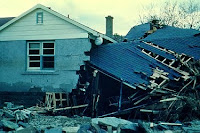A black hole is a celestial body whose surface gravity is so strong that not even light can escape once trapped. It is invisible, you can not see it at all. Light cannot escape, nothing else can, according to Einstein's theory of relativity. A French mathematician, Pierre Simon de LaPlace agreed with Isaac Newton that light is composed of particles. A way to identify a black hole is gas from a star nearby is flowing towards a black spot at the speed of light.
A comet is a small member of the solar system made up of rocky material held together by frozen gases. The parts of the comet include the halo, the coma and the tail. A halo is material that surrounds the nucleus. The tail is the part of a comet that doesn't face the sun. The coma is the side that always faces the sun.
SETI is the acronym for the search for extraterrestrial intelligence. It is the search for electromagnetic signals from other civilizations in the universe. Several SETI projects currently operate at different observatories. The majority of SETI efforts search for radio transmissions, but a growing number of programs search for light signals.
Mars
, the fourth planet from the Sun, is more like Earth than any other body in our solar system. It has mountains and valleys, polar ice caps, and dry riverbeds. It has seasons, an atmosphere with clouds, winds and dust storms, and a solid rocky surface.
Even without a telescope, you can tell that the lunar surface is covered with two different types of terrain, one bright and the other dark. The bright terrain is usually called the “highlands” because it lies relatively higher in elevation. The dark terrain is separated into often circular blotches that are referred to as the lunar maria. The maria are mostly lower in elevation than the highlands.

 ves us an idea of what was here before us.
ves us an idea of what was here before us.









 Jewel Plummer Cobb
Jewel Plummer Cobb








